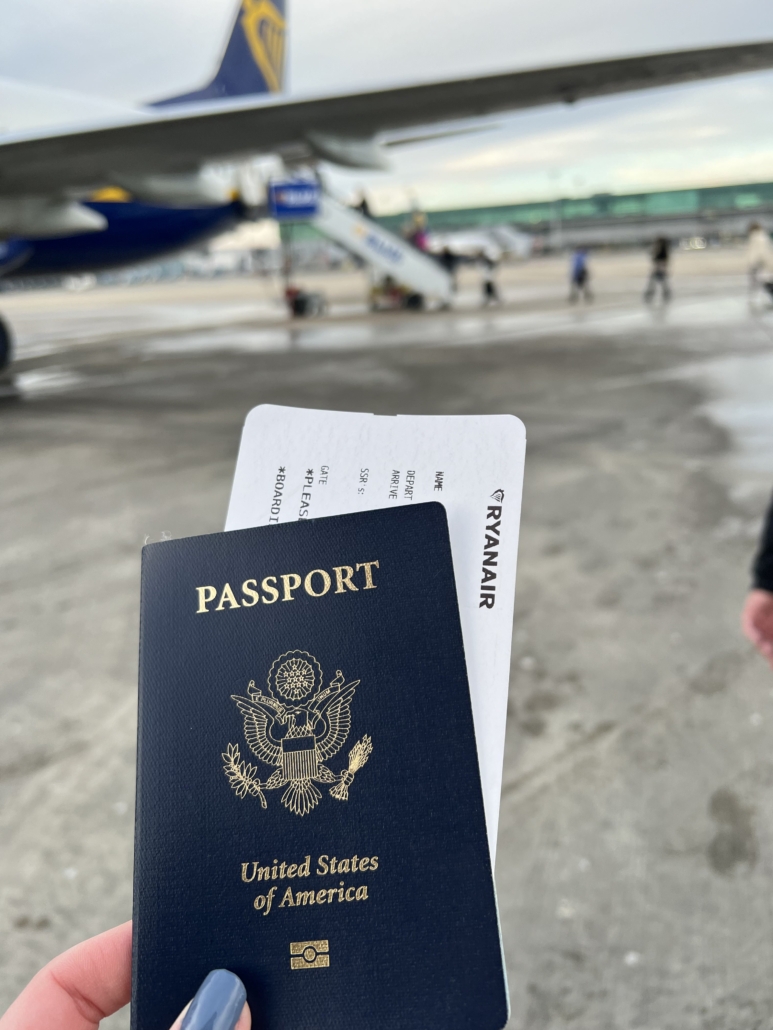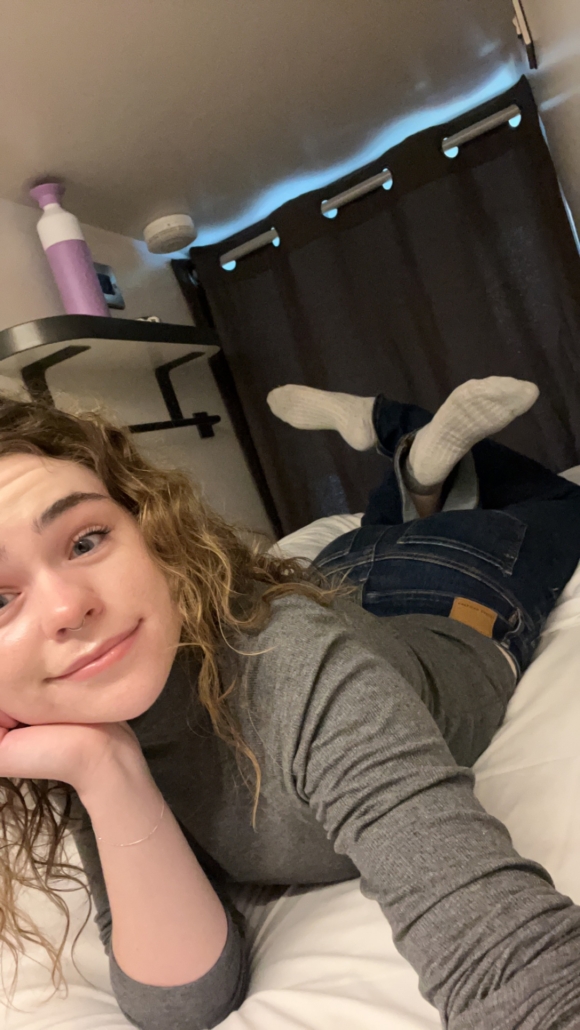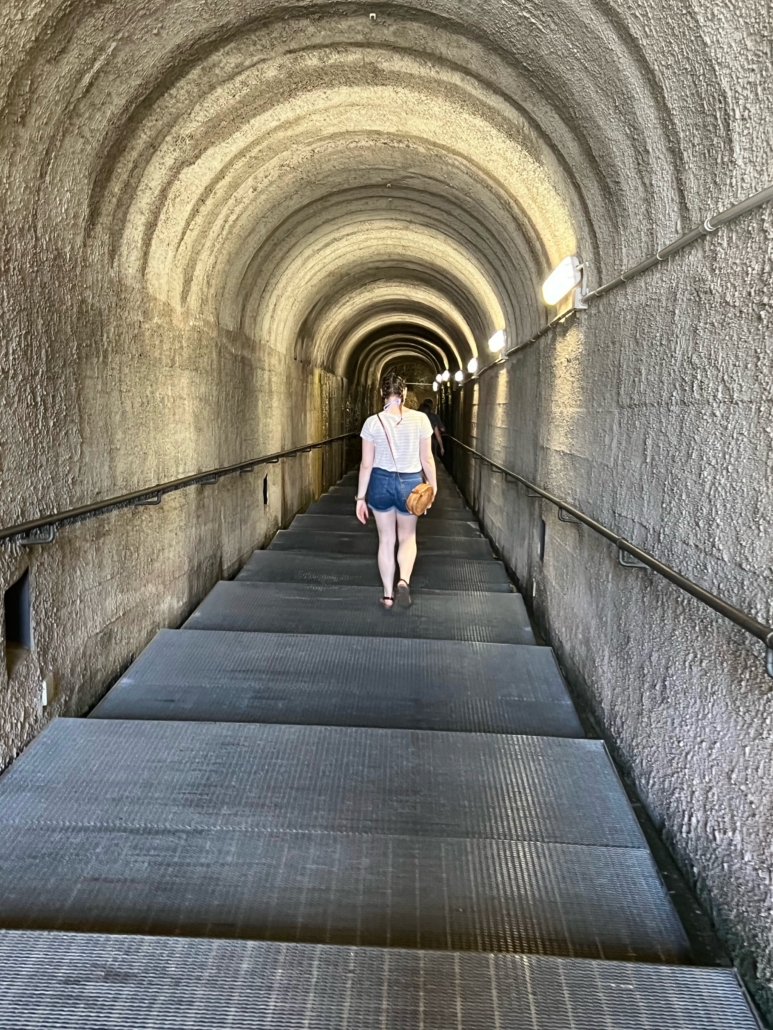For many international students, the draw to Richmond is the access to affordable travel across Europe. Like many, I have taken advantage of this opportunity in my four years here. I have travelled to over 16 different places and have learned many travel tips for planning and making the most of your travels. I always share my tips and tricks with my friends, so here’s my guide to planning your break!
Step 1: Narrow down where you are going!
Some may have a specific place you want to go, but my rule of thumb is to always be open to wherever the cheapest tickets take you!
Use Skyscanner.com!
In the flights search choose From: any London airport, To: Everywhere, Depart: flexible dates: the month you are looking in. Keeping your options open and flexible, like searching based on months vs specific dates allows you to find the best ticket prices. The cheapest tickets usually require you to be at the airport very early in the morning. I know this is far from ideal, but it’s worth it to save a few extra pounds.
Have a specific location in mind?
Many students head to Amsterdam their first break, where the main airport may be the most expensive option. For my trip to Amsterdam, I saved over £45 by flying through Eindhoven and taking a train to Amsterdam. This is also a great way to see the country and maybe explore other cities before you get to your main destination. However, with this option, not all countries have as amazing public transport, or are as small as the Netherlands! It is important to compare your options and the cost of trains with airplane tickets vs just airplane tickets. It’s also important to know yourself with this option; some countries may be stressful to figure out public transport the first time, or it may be annoying to sit on a train (which may come with delays or long wait times) for a few hours.


Getting to and from the airports
What makes the flights affordable is the airports they fly into. These airports are rarely in the city you are traveling in, putting them close to an hour from city centre where you may want to stay. Expect £10-20 per trip to Stansted airport but exact costs for UK travel are on Trainline, National Express.com, or Stansted Express.com. Compare the prices on these sites and the possible routes on google maps to get the best price and quickest route.
Over £100? Try trains
If the prices of the plane tickets and bus/train tickets add up to over 100, and you are going somewhere accessible via Eurostar (the train from London to Europe), it may be beneficial to compare prices on Eurostar.com. Typically, the Eurostar is more expensive however you can find roundtrip tickets to any of the destinations starting at £72 if you are flexible with dates and times. This also saves the added costs if you need a larger bag (I’ll explain further in packing) and travel to and from the airport as the Eurostar brings you right to the city centre!
Step 2: Accommodation
The next biggest cost is accommodation.
Hostel world: 1 – 4 people
If you are okay with sharing a shower, and not having the most luxurious experience, hostels are the cheapest and best option. Look at both privates, if you have multiple people, or just a bed in a shared room, if you’re travelling with only one to two people.
Hostel world, Booking.com, Airbnb: 4+ people
You can still look on hostel world, but booking.com or Airbnb may have better options. While I mention Airbnb as an option, I usually do not recommend as they come with higher fees than other websites.

Step 3: What to do
Now finding what to do on your trip all depends on you. I personally love a go-go-go trip, but my best friend prefers a casual one-activity-a-day followed by top recommended local pub at night. Know what type of traveller you are, and if you travel as a group learn this about your friends before you leave (I promise it will not be a fun time if you find this out on the trip). Nonetheless, there are many options on how to find activities.
Use your friends at Richmond
Because of how international our community is, you will often know a peer or professor from the place or country you are going, or who has been there before, and can share recommendations on what is a must-do.
Use social media i.e. Instagram and TikTok
While this may not be the easiest option, with time you can find many travel accounts that share their top recommendations on what to do and where to go. Then you can read the comment section which always have locals popping in to confirm or deny these recommendations. This typically requires you to build up accounts and recommendations through time and not last minute, but I have found some of my best experiences through this.
Get Your Guide
This has some of the best ways to learn about the location, history, and experience something you wouldn’t find otherwise. Get Your Guide is my favourite because of its ease of use and prices. They have something in every price range, and I’ve never had a bad time on whatever experience I’ve chosen. Some of the activities I’ve found were exploring the caves under Buda in Hungary, snorkelling in the Mediterranean in Cyprus, and exploring Glendalough and the Wicklow mountains in Ireland. Moral of the story, don’t skip out on the experiences these apps have! It’s even worth staying an extra day and looking for a day trip out of the city to explore the country a bit more.


Step 4: Food
I often find people forget to add food to their planning. Since this cost is necessary, it is something to be considered into the budget or travel plans.
Research!
Before you decide anything, research the average costs of meals, grocery, etc in the location you are traveling. Each country has very different prices for different item so think about that.
Fitting your budget
If you are truly on a strict budget, stay at a hostel with a kitchen, find a grocery store, and make your own meals. If you aren’t, go wild!
Local options
Try as much local food and drink as you can within your budget. If you want truly authentic food, leave the city centre or use google to find top recommendations. Usually, I avoid all restaurants that automatically have an English menu. Downloading Google to translate through your camera is the best way to read the menu when it’s not in English.
Finding restaurants (especially with Dietary restrictions!)
Planning restaurant options isn’t for everyone, but if you’re like me and have dietary restrictions, it’s required. If you have a restriction, learn the local term(s) and how to say you can’t eat something in the local language! I typical have the questions: ‘Does this contain… I cannot eat… Is there a __ free option?’ saved in my notes. Social media is my favourite place to find where to eat. There are also many resources and blogs online that you can find with top recommendations or just ask around. If you’re not restricted, make friends with locals, ask for recommendations, or find restaurants that look good while you’re out exploring.

Step 5: Packing
Lastly, keeping your trip cheap is heavily reliant on your packing. Budget airlines make their money from add-ons, like additional luggage. With your ticket you get a personal item, usually the size of a mid-sized backpack and any additional luggage could cost more one-way than the cost of your plane ticket roundtrip.
You only need a personal item!
Narrow down your packing to fit in your backpack. It might seem impossible, but it is totally possible, and you don’t need nearly as much as you think you might. Once you do it once, it comes naturally! Make sure your backpack fits within the airline’s guidelines before your trip. If you don’t have one, there are plenty of backpacks made for this purpose on Amazon.

Phew, okay, finally done. I know this was a long one, but I hope it helps plan your first trip or even help lower the costs of your future trips! These tips and tricks have all saved me hundreds and helps me keep my trips well under £300 for four or more days.
Happy travelling!


